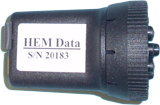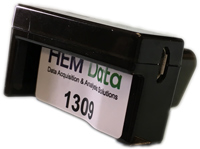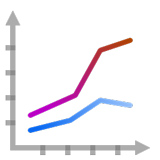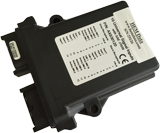Many operating parameters are available on Heavy Duty vehicles from the J1939 in-vehicle network. Important J1939 parameters include:
- Accelerator pedal and throttle position
- Engine speed and load (absolute & calculated)
- Temperatures: coolant, ambient, catalyst
- Vehicle speed
- Diagnostic Trouble Codes (DTCs)
The key parameter for fuel consumption is Engine Fuel Rate. This provides instantaneous fuel consumption. Dividing vehicle speed by fuel consumption provides instantaneous fuel economy.
To calculate fuel economy for an entire trip, we must know distance. We can use the parameter High Resolution Total Vehicle Distance. First integrate the fuel rate over the trip duration to determine fuel consumption. Then divide the total distance by the total fuel consumption.
Some J1939 vehicles will provide these calculated values directly. The following parameters are defined in the SAE J1939 specification, however many of these are not typically available.
- Engine Average Fuel Economy
- Engine Instantaneous Fuel Economy
- Engine Total Average Fuel Economy
- Trip Drive Fuel Economy
- Engine Total Average Fuel Rate
- Trip Average Fuel Rate
A Key question is: How Accurate is the J1939 Fuel Consumption Data?
DOE’s National Renewable Energy Lab (NREL) stated J1939 data reported 6% better fuel economy than their lab testing on a conventional vehicle (UPS truck). In addition for hybrid vehicles, J1939 reports 11% better fuel economy than lab testing. The lab testing and J1939 were measured simultaneously.
The good news is that they reported highly consistent results. Therefore, they used the J1939 data and corrected it to the 6% and 11% differences so they had the convenience of acquiring J1939 data with the accuracy of lab measurement. This is reported in SAE paper 2012-01-2049, Measured Laboratory & In- Use Fuel Economy… by M.P. Lammert, et al.
Generally, torque and fuel consumption are not measured directly by sensors on the vehicle. Instead they are calculated from proprietary messages. For example
- Fuel Rate is based on Command-Fuel-Quantity. It is often verified with fuel-rail-pressure and fly-wheel feedback.
- Torque is based on Command-Torque relative to the Torque-Curve for the engine as a function of engine speed, boost, altitude, temperature, etc. Typically, engine torque is reported as Percent Load on J1939.






